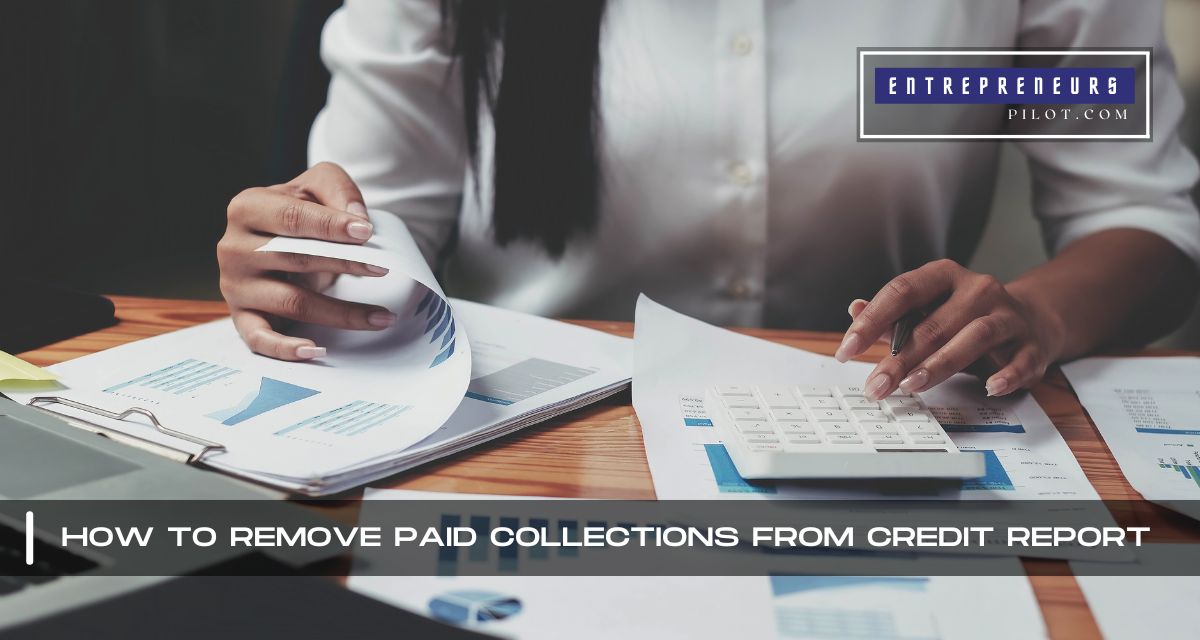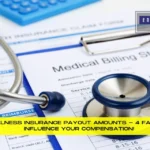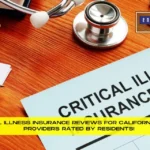How To Remove Paid Collections From Credit Report. Looking to remove a paid collections account from your credit report in just 30 days? You’re aiming for a financial fast track, and while it’s challenging, it’s not entirely impossible. Let’s go over some actionable steps to get you closer to a squeaky-clean credit report in a matter of weeks.
Table of Contents
- Review Your Credit Report: Before anything else, get a current copy of your credit report from the three major bureaus: Equifax, Experian, and TransUnion. Confirm that the collections entry is marked as “Paid.”
- Identify Inaccuracies: If there are any inaccuracies in how the paid collections entry is reported, this could be your quickest ticket to removal. File a dispute with the credit bureau, pointing out the errors. By law, they have 30 days to investigate and remove inaccuracies.
- Goodwill Letter: Your next move could be writing a goodwill letter to the collections agency. In this letter, kindly request that they remove the entry as a goodwill gesture. Acknowledge your mistake and describe any circumstances that led to the debt. Some agencies will remove the entry if you’ve paid the account and have a compelling reason.
- Negotiate Removal: If the goodwill letter doesn’t work, you might try negotiating removal as part of a settlement agreement. Though you’ve already paid, sometimes a collection agency may remove the entry to maintain a good relationship with you. However, this is rare for paid accounts.
- Consult Legal Options: If the entry is genuinely erroneous and not merely an eyesore, consult a legal advisor familiar with credit report issues. They may be able to expedite the removal process within your 30-day time frame.
- Seek Professional Help: Lastly, consider hiring a reputable credit repair company. While they can’t work miracles, they might have strategies to help you achieve your goal in the quickest manner possible.
- Follow Up: Whichever route you take, don’t forget to follow up diligently. Keeping a paper trail and setting reminders to check your credit report for updates can be crucial to meeting your 30-day deadline.
- For Expert Financial Insights And Guidance, You Can Visit Our Sister Site – ArabsGeek.com Now!
- Curiosity Piqued? Dive Into the Most Captivating Financial Content by Visiting Our Homepage!
- Unlock Exclusive Business Opportunities! 🚀 Connect with Us Now at our Email: [email protected]!
While each of these methods comes with its own set of challenges and there’s no guarantee of success, especially in such a tight timeframe, they do provide you with a course of action. Paid collections accounts can be stubborn stains on your credit report, but with persistent and strategic efforts, you have a fighting chance to remove them sooner rather than later. Time to roll up those sleeves and get to work!
Letter To Remove Paid Collections From Credit Report
Crafting a letter to remove a paid collections account from your credit report can feel like a high-stakes endeavor. But rest assured, it’s a common practice and you’re not alone in this. Below is a sample goodwill letter template tailored for someone looking to remove a paid collections entry. This is a starting point; feel free to customize it to better suit your situation and reflect your personal tone.
[Your Name]
[Your Address]
[City, State, Zip]
[Email Address]
[Phone Number]
[Date]
[Collection Agency’s Name]
[Their Address]
[City, State, Zip]
Subject: Request for Goodwill Adjustment – Account No: [Your Account Number]
Dear [Name of Collection Agency],
Regarding my account number [Your Account Number], which I recently paid in full, I am writing to you now. I want to start by apologizing for missing my financial commitment and recognizing the responsibility I had towards this debt.
I was going through [include any difficulties you’ve encountered, such as job loss, unexpected medical expenses, etc.] at the time the debt was incurred, which had a significant impact on my capacity to pay my bills. I am aware that my circumstances do not excuse me from my commitments, but they were unavoidable, and I have since taken steps to guarantee that I continue to be a responsible financial citizen.
I respectfully request that you take into mind removing the collections account off my credit reports as a gesture of goodwill. My financial development and ambitions are significantly hampered by this collections entry. I am eager to continue moving in a direction that will improve my financial situation now that the debt has been paid off. The entry acts as a permanent fine, affecting my ability to obtain loans or get better interest rates.
I value the part your organization plays in ensuring that obligations are repaid. I’ve already overcome my financial difficulties, but keeping this record on my credit report would be a long-term punishment.
I appreciate you reading my letter, and I hope you will. Although I am aware that you are not required by law to comply with my request, I sincerely hope you would see this as a chance to show me some consideration. I’m devoted to building a solid financial future and would be eternally grateful for your help in helping me put this difficult time in the past.
Regards, [Your Name]
Remember that the purpose of this letter is to acknowledge your previous error while also appealing to the compassion and fairness of the collecting agency. Send the letter certified mail, return receipt requested, or something similar so you have documentation that it was received. It’s a good idea to make copies as well for your records.
I wish you luck and a prosperous future filled with opportunities.
How Long Does It Take To Remove Paid Collections From Credit Report
Navigating the process of removing a paid collections account from your credit report can feel like a journey through a maze. The timeframe for successful removal can vary significantly depending on several factors. Here’s a general idea of what you can expect:
- Dispute Process: If you’ve filed a dispute over inaccuracies, the credit bureau generally has 30 days to investigate the matter. If they find in your favor, the entry could be removed shortly thereafter.
- Goodwill Letter: If you’ve opted to send a goodwill letter, the response time can vary greatly. Some people have success within a few weeks, while others may have to wait a month or two. It also depends on the internal processes of the collections agency to which you’re appealing.
- Negotiation: If you’re in the midst of negotiating a “pay-for-delete” agreement (which is quite rare for paid accounts), the timeline could be anywhere from a few weeks to a couple of months. This depends on how quickly both parties come to an agreement and how swiftly the collections agency acts afterward.
- Legal Routes: If you’ve consulted a legal advisor or have had to resort to legal action to remove the entry, the timeframe is even more unpredictable. Legal processes can stretch out for months or even years in some cases.
- Professional Help: If you’ve engaged a credit repair service, the timeframe may vary but could still take several weeks to a few months. Remember, these services can’t guarantee results, but they often have experience in speeding up the process.
- Manual Removal: If the collections agency agrees to remove the entry (either through goodwill, negotiation, or legal obligation), they’ll typically notify the credit bureaus directly. Once that happens, it can take the bureaus anywhere from a few days to a few weeks to update your report.
- Automatic Fall-Off: If you’re waiting for the entry to naturally fall off your report due to the seven-year rule, you’ll need to mark that date on your calendar and verify the removal after that time has passed.
It’s essential to continually check your credit report to confirm that the entry has been removed and to ensure there are no other discrepancies. If you’re dealing with multiple collections agencies or credit bureaus, each may have its own timeline for removal, so be sure to follow up diligently.
So, there’s no one-size-fits-all answer, but being proactive, organized, and persistent can help you expedite the process as much as possible. Good luck on your journey to a cleaner credit report!
How To Remove Old Paid Collections From Credit Report
Ah, old paid collections accounts—they’re like those stubborn stains that refuse to go away, despite all your efforts. But worry not, because there are ways to tackle them and improve your credit health. Here’s how you can go about removing those old paid collections accounts from your credit report:
Step 1: Obtain Your Credit Reports
Your first move is to get your latest credit reports from all three major credit bureaus—Equifax, Experian, and TransUnion. You’re entitled to one free report from each bureau annually via AnnualCreditReport.com.
Step 2: Verify the Details
Ensure that the information listed under your old collections accounts is accurate. This includes the amount, the date of the first delinquency, and the name of the creditor. Inaccurate details can provide grounds for immediate removal.
Step 3: Check the Age of the Debt
Every debt has a statute of limitations or a reporting time limit. Most collections accounts can only legally stay on your report for seven years. If the debt is older, you can petition to have it removed.
Step 4: File a Dispute
If you find inaccuracies or if the debt is past its reporting time limit, file a dispute with the respective credit bureau. They have 30 days to investigate and respond. If they can’t validate the account, they must remove it.
Step 5: Goodwill Letter
In the case of accurate but old paid collections, you can try sending a goodwill letter to the collections agency. This is where you ask nicely if they would consider removing the negative entry as a gesture of goodwill. Explain any hardships or circumstances that led to the debt and how you’ve improved your financial habits since.
Step 6: Negotiation
While uncommon for old, paid-off accounts, some people have successfully negotiated the removal of the entry by offering to pay a small fee. This is known as a “pay-for-delete” strategy, but be aware that not all collection agencies will agree to it.
Step 7: Consult a Professional
If you’re not making progress and the collections entry is causing significant harm to your financial life, you might consider seeking legal advice or hiring a reputable credit repair company.
Step 8: Keep Monitoring and Following Up
Once you’ve initiated these steps, regularly check your credit report to confirm the entry has been removed. Keep all correspondence and records; you might need them later.
So there you have it. It might take some time, paperwork, and a heap of patience, but it’s possible to have old paid collections accounts removed from your credit report. And once you’ve done that, it’s like lifting a weight off your financial shoulders—a weight that’s been holding down your credit score and limiting your financial freedom. Cheers to moving on up!
How To Remove Paid Medical Collections From Credit Report
Medical bills can be an unexpected burden that leaves a lasting mark on your financial history. The stakes are even higher when they end up in collections and subsequently appear on your credit report. Let’s dive into how you can go about removing paid medical collections from that all-important document.
Step 1: Double-Check Your Credit Report
Start by getting the latest copies of your credit reports from the three main bureaus—Equifax, Experian, and TransUnion. You can request one free report from each bureau every year through AnnualCreditReport.com. Review the paid medical collections entry to make sure all the information is accurate.
Step 2: Verify the Age and Details
Older accounts have a natural expiration date when it comes to your credit report. Typically, collections accounts stay for seven years. Confirm that the medical collections entry is not outdated. Also, make sure the amount and the name of the collection agency are correct.
Step 3: Dispute Inaccuracies
If you find any incorrect information, file a dispute with the credit bureau that’s reporting it. By law, they have 30 days to investigate the claim and correct any inaccuracies, which might result in the removal of the entry.
Step 4: The HIPAA Angle
The Health Insurance Portability and Accountability Act (HIPAA) includes some provisions that could help you in removing medical collections. Use HIPAA rules to ensure that the debt was reported accurately and that your privacy was not violated. Any non-compliance might give you leverage to get the item removed.
Step 5: Goodwill Letters
If the entry is accurate but you’ve already paid it off, you can send a goodwill letter to the collections agency. This is a written request where you ask the agency to remove the negative entry as a goodwill gesture, explaining any medical or financial hardships that led to the situation.
Step 6: Settle and Remove
Although it’s uncommon for paid accounts, some individuals have successfully negotiated the removal of a medical collections entry by offering a settlement or by paying a “nuisance fee.” Make sure to get any agreement in writing before making a payment.
Step 7: Consult an Expert
If you’ve tried all of the above and haven’t made headway, it might be worth it to consult with a legal advisor or a credit repair service that specializes in such removals.
Step 8: Monitor Your Credit Report
Regularly check your credit report to ensure that the entry has been removed and to catch any other negative items before they cause more damage.
Removing paid medical collections from your credit report isn’t a walk in the park, but it’s certainly not impossible. Each step you take brings you closer to a cleaner credit report and, by extension, a healthier financial future. Keep at it, and don’t lose hope!
Will Paying Off A Collection Remove It From My Credit Report
Let’s clear up a common misconception right off the bat: Simply paying off a collections account generally won’t remove it from your credit report. It will update the status to “Paid,” which looks better to future creditors than an unpaid collections account, but the negative mark itself usually sticks around. Here’s what you should know:
The Seven-Year Rule
Most collections accounts, paid or unpaid, have a lifespan of seven years on your credit report. This starts from the date of your first delinquency with the original creditor, not when the account was sent to collections or when you pay it off. After this period, the entry should automatically fall off your report.
Impact on Your Credit Score
While a paid collections account is definitely better than an unpaid one, its impact on your credit score is still significant. However, newer credit scoring models like FICO 9 and VantageScore 3.0 weigh paid collections less heavily than unpaid ones, which could be beneficial when applying for credit or a loan.
Removal Strategies
- Goodwill Letter: Once the account is paid, you can try sending a goodwill letter to the collections agency. In this letter, you can request that they remove the entry as a goodwill gesture.
- Pay-for-Delete: Some people attempt to negotiate a “pay-for-delete” arrangement. This is where you agree to pay the debt, and the collections agency agrees to remove the entry from your credit report. However, not all agencies will agree to this, and it’s not a guaranteed method.
- Dispute Inaccuracies: If you find inaccuracies in the collections entry, you can dispute it with the credit bureaus. If they can’t verify the accuracy, they are obligated to remove it.
Professional Help
If all else fails, consider getting advice from a financial advisor or a credit repair agency. They can provide expert strategies that might improve your chances of removal.
Paying off a collection account won’t magically erase it from your credit report, but it does set the stage for potential removal and credit improvement. Regardless, settling your debts is a step in the right direction toward financial freedom and peace of mind. Keep pushing forward; your financial health is worth it!
Can You Remove Paid Collections From Your Credit Report
Absolutely, removing paid collections from your credit report is a possibility, although it can be a bit of a tightrope walk. Paid collections are usually less harmful than unpaid ones but they can still act as red flags for future creditors. So how can you attempt to erase them from your report? Here’s your guide:
Dispute Errors
Firstly, get your credit reports from all three major credit bureaus—Equifax, Experian, and TransUnion. If you spot inaccuracies, such as a wrong amount or a paid collection still marked as unpaid, you can dispute the error with the bureau. They usually have 30 days to investigate and make any corrections.
Goodwill Letters
If you’ve been a good customer otherwise, some creditors might be willing to remove the negative entry out of goodwill. Write a heartfelt letter explaining any circumstances that led to the debt and how you’ve turned your financial habits around. Keep it respectful and honest; you’d be surprised how far courtesy and sincerity can get you.
Negotiate a “Pay-for-Delete”
Although this strategy is in a moral and legal gray area, some individuals have succeeded in negotiating a “pay-for-delete” agreement with creditors. This means you pay the debt, and the collections agency agrees to remove the entry. Be cautious with this approach, as not all agencies will agree to it, and some experts advise against it.
Statute of Limitations
If the collections account is older than seven years, it should automatically fall off your credit report. This is known as the statute of limitations. If the entry hasn’t been removed automatically, you can file a dispute to have it taken off.
Legal Advice
If you believe the collections account is on your report unjustly and you’ve already taken steps to remove it with no success, you may want to consult a lawyer who specializes in credit issues.
Professional Help
Credit repair agencies are another avenue you can explore. They’ll take on the task of disputing negative items on your report for you, although they do charge for their services, and there’s no guarantee of success.
Keep Monitoring
Always keep an eye on your credit reports to ensure that the paid collections entry is removed if you’ve taken steps to do so. Incorrect or outdated information can reappear, and you’ll want to catch it as soon as possible.
Yes, the process might be challenging, but remember: the aim is to improve your financial life. So, roll up your sleeves, get proactive, and take those steps toward financial freedom and a pristine credit report. Good luck!











